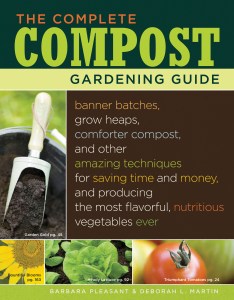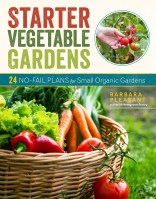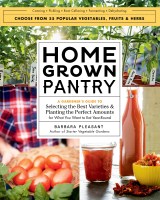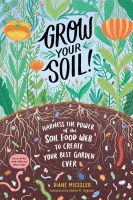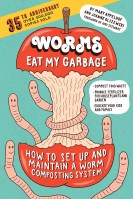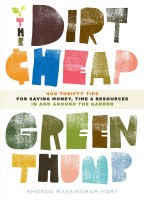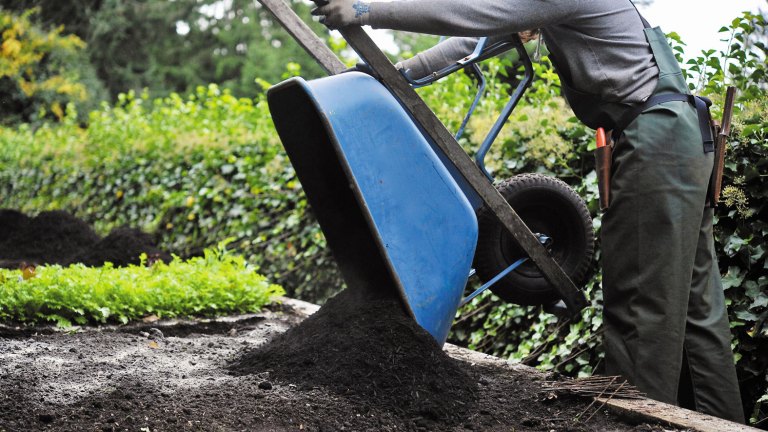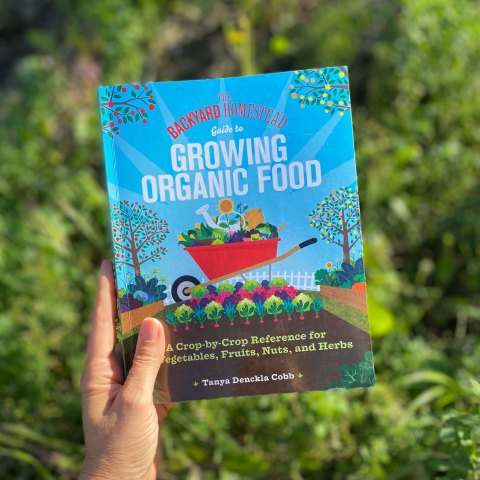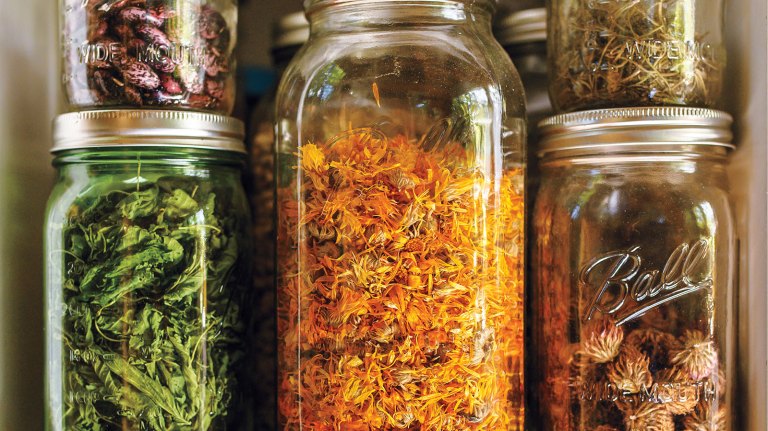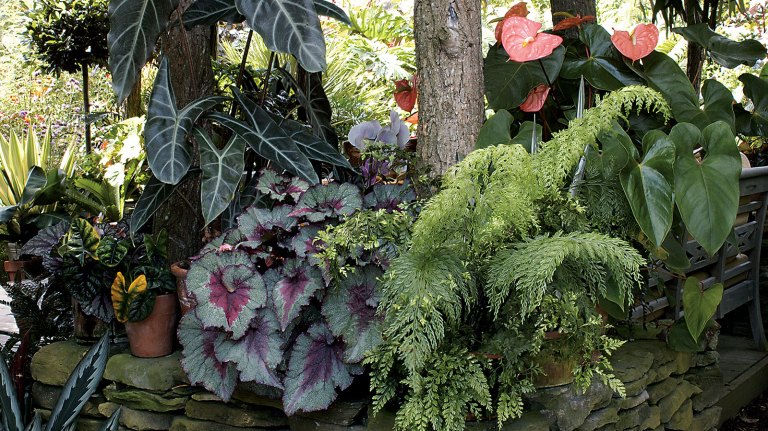Twelve Rules of Raking Leaves for Compost
Using fallen leaves to make compost that enriches your garden soil is one way to make raking the yard a task with a purpose, rather than just another chore.
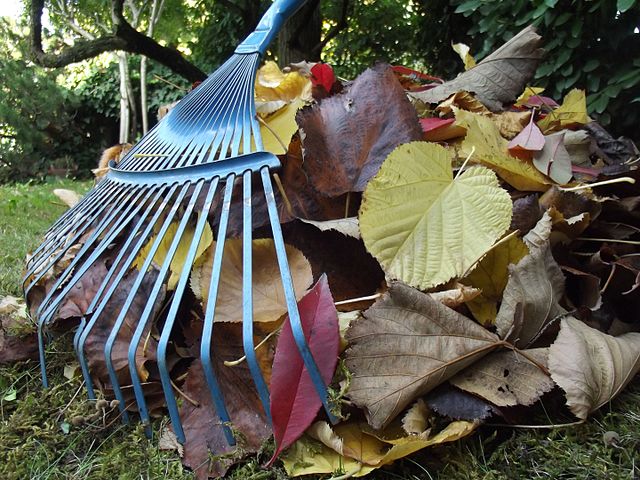
A certain measure of sorrow marks the end of the growing season, but that grief can be lightened by the realization that a new composting season is beginning. In most temperate landscapes, the largest infusion of organic matter of the year comes with the new crop of autumn leaves. Depending on your climate, the harvest of leaves shed by trees can stretch on for four to six weeks, allowing plenty of time to gather the season’s compost bounty.
Composting with Leaves
Leaves vary in how long they take to decompose, because they are not all alike. Thin leaves that are high in calcium and low in lignin — for example, those shed by dogwoods and birches — will rot in the course of a winter, while thicker oak or magnolia leaves may take two years or more to make the transition from fallen leaf to morsels of humus. Some gardeners think that mixing leaf species together in a compost pile helps to even out the time difference, and this is partially true.
Lignin molecules break down when they are ready, which is usually after leaves have been thoroughly leached and then worked by various types of fungi. Composting has little or no effect on the initial leaching stage, but after the leaching is done, the increased microbial diversity that is achieved when different leaf species are mixed together in compost may help the slower decomposers move along a bit faster. Leaves are low in nitrogen and high in carbon, with an average C/N ratio in the 50/1 to 60/1 range. Don’t hold their low nutrient composition against them.
Composting provides endless opportunities to compensate for the low nutritional value of leaves by combining them with materials that are higher in nitrogen. Or, you can not worry about nitrogen at all and simple appreciate the substantial contribution rotted leaves can make to your soil’s bank of organic matter. Either way, it is unrealistic to expect to see much decomposition from leaves during their first winter.
Chopping and Shredding Leaves
Chopped or shredded leaves make nicer looking mulch and work much better than whole leaves for most composting projects. If left to rot into leaf mold (a dark, crumbly, earthy-smelling material resulting from the decomposition of tree and shrub leaves), shredded leaves will make the transition in only a year or so, compared to two to three years for whole leaves. Best of all, chopping leaves reduces their volume by about two-thirds, or sometimes more, so they take up much less composting space than whole leaves. You can use a lawn mower, string trimmer, or leaf shredder to chop up your leaves.
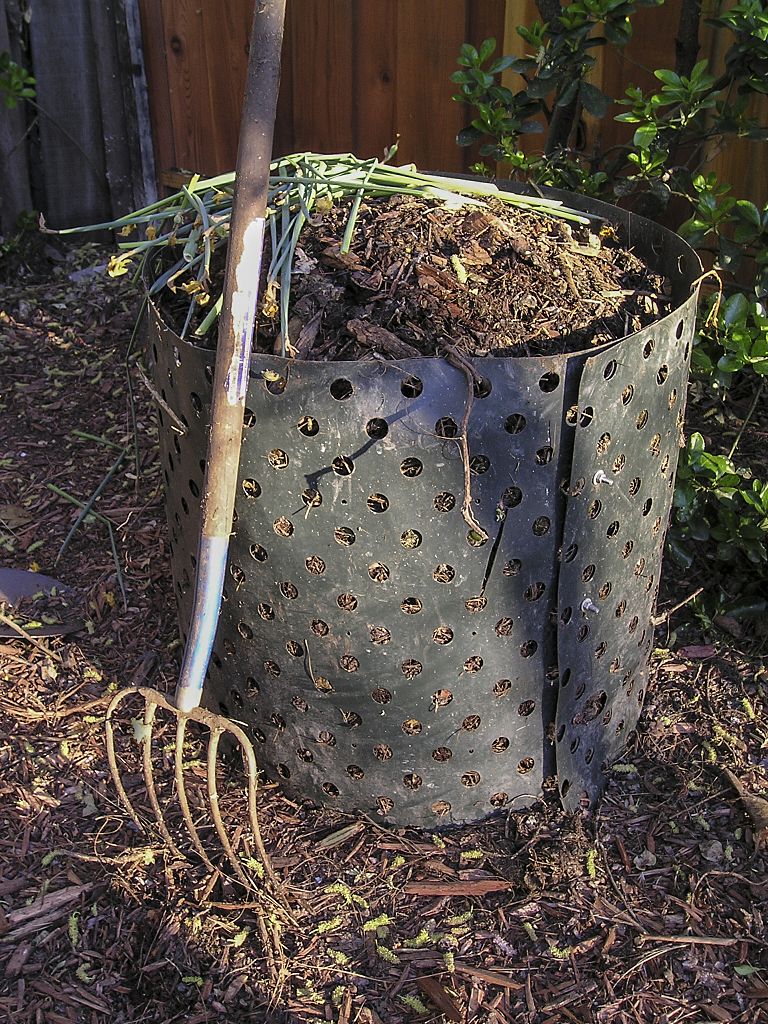
No matter what your composting plans may be, take a moment to review the 12 Rules of Raking to make sure you’re making the best use of your time, energy, and leaves.
12 Rules of Raking
- Always rake with the wind, and rake downhill whenever possible. Leaves are light, but they have enough weight to respond to the pull of gravity.
- Share the wealth with your lawn. Leaves contain some of the nutrients that trees and shrubs have taken out of the soil, and it’s in keeping with Nature’s plan that you should give back some of those purloined nutrients by mowing over part of your annual leaf-fall, thus returning organic matter to the soil from whence it came. This works best in early fall when the first leaves are coming down and grass still benefits from mowing. In addition to helping the lawn, it’s easier to rake turf areas that have been smoothed over by a good mowing.
- Keep whole leaves from blowing away by stomping through the pile. If you are using a bin or other enclosure, leave it open on one side until you’re through collecting leaves. That way, you can rake or dump right into the pile without lifting your loads over the sides of the bin, and your leaf pile will be accessible for walk-in stomping.
- Minimize how far you move your leaves. Rake them directly onto nearby beds that won’t be worked until spring. Use shredded leaves as mulch beneath foundation shrubs. Maintain leaf piles in different parts of your yard so you won’t have to drag or carry tarps full of leaves any farther than necessary.
- Match your rake to the type of leaves you have in your yard and to your body. At stores, try rakes on for size before you buy. Rakes with metal tines last longer than plastic ones, but plastic tines may be lighter.
- Use your mower to shred what you can. Put shredded leaves to work in active compost projects. Set aside whole leaves in a separate pile, and deal with them later when you have more time.
- Mix leaf species whenever possible. Leaf-eating microorganisms that get started on thin maple or dogwood leaves will move on to thicker oak leaves as the pile decomposes.
- Wear gloves to prevent blisters. Cloth gloves are comfy, but any glove that protects your skin from rubbing on the rake handle will suffice.
- Wear a dust mask when shredding leaves with your mower, especially if you have allergies or are easily irritated by dust.
- Don’t pick up leaves unless you must. Instead, use an old sheet as a tarp, pick up the corners, and carry or drag the bundle to your piles. Few carts or wheelbarrows have the capacity and portability necessary to make them worthwhile during leaf season. Use a sheet, tarp, or Composter’s Sling to collect and move shredded leaves.
- Watch the noise. When you’re not in the mood to mess with your mower, or the sound of a leaf blower or shredder would ruin your neighbor’s quiet afternoon in their yard, fall back to manual raking and collecting methods and work with whole leaves.
- Work a little at a time, and stop when you’ve had enough. Keep in mind that leaf season will last for several weeks, so you have plenty of time to let yourself enjoy the weather and the work.
Text excerpted from The Complete Compost Gardening Guide ©2008 by Barbara Pleasant and Deborah L. Martin. All rights reserved.
